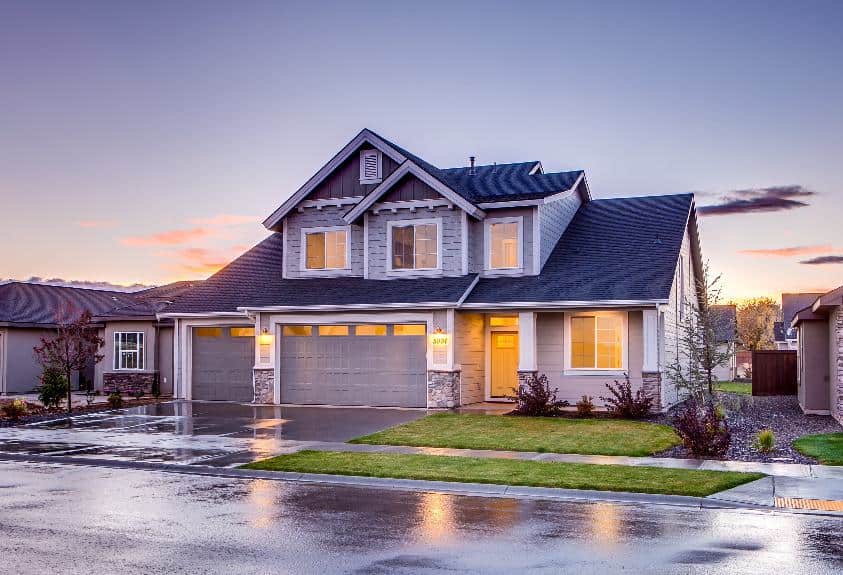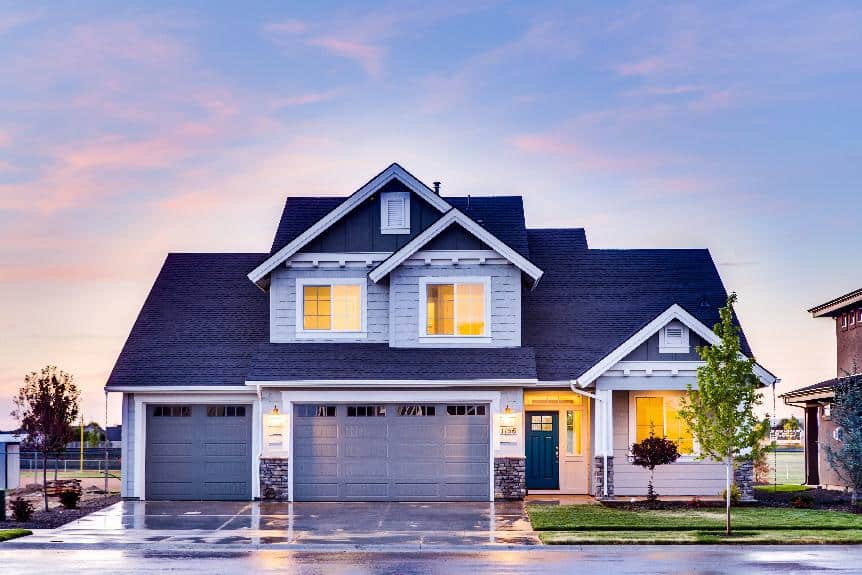To properly light a garage, it's important to place lights strategically. Start by evaluating your space. Central lighting should provide overall light, while additional lights should be aimed at specific work areas to improve visibility. Install lights around the garage perimeter to minimize shadows.
Choose between overhead and wall-mounted lights based on the garage design and intended activities. If possible, use natural light to complement artificial lighting. Motion-sensor lights can be both convenient and energy-saving.
Careful consideration of lighting types and placement can make your garage a well-lit and functional area.
Assessing Your Garage Space
Assess the garage's lighting and size to determine where to place new fixtures. Lighting is crucial for function and safety. Calculate the lumens needed per square foot to ensure even lighting without dark areas or glare.
Consider ceiling height; taller ceilings require stronger lights. For typical home garages, choose fixtures with a wide beam spread. For high ceilings, recessed lights may be suitable as they provide strong downward lighting and a clean look.
Select lights for the garage door area that are proportional, between 1/4 and 1/3 the door's height, to balance effectiveness and visual appeal.
Install lights in positions that do not block the garage door's movement. Proper planning ensures an efficient and visually pleasing installation, improving the garage's functionality.
Understanding Lighting Types
There are various types of garage lighting available to suit different needs. Task lighting is essential for areas needing precision, such as workbenches, and provides a high lumen output for safety and efficiency. Accent lighting is used to feature certain aspects of the garage, creating visual appeal with directional fixtures that focus light on specific areas.
The color temperature of lights, measured in Kelvin (K), impacts the look and feel of the space. Lower Kelvin values give off a warm, yellow light, while higher values create a cool, blue light, influencing the garage's functionality and atmosphere.
Recessed lighting, which is installed into the ceiling, offers a minimalist design and widespread illumination without glare or shadows, making it suitable for general lighting.
Central Lighting Placement
When installing central lighting in a garage, it's important to choose fixtures that provide even light throughout the area, taking into account work and storage spaces. The ceiling height affects light distribution, with higher ceilings possibly requiring stronger or more fixtures for adequate light coverage.
For garages with standard ceilings, LED strip lights or shop lights are effective for uniform light distribution and energy efficiency. These lights should be evenly spaced to prevent shadows or dark areas. In a garage with one door, place a light centrally between the house and garage, and another about 15-16 cm above the garage door. For two-door garages, position two lights above each door. With three or more doors, center a light above each door.
Ensure that the placement of lights doesn't interfere with garage door openers. Proper positioning of central lighting improves visibility and the functionality of the space. The aim is to evenly distribute light, so adjust placement and quantity of fixtures to suit the specific layout and needs of the garage.
Task Area Illumination
Task area lighting in a garage should be arranged to provide clear visibility for detailed activities like car repairs or woodworking. To do this, focus a bright light source directly on the work areas without causing shadows or glare. Install LED strip lights above workbenches or around tool cabinets, cut to the necessary length to cover the workspace. Ensure the lights are bright for clarity but not too strong to avoid eye strain.
Each light should have its own switch for independent control, allowing users to light only the needed areas, which saves energy. Consider using lights with adjustable brightness to customize the light level for different tasks.
Properly set up task lighting enhances safety and efficiency for various garage activities.
Perimeter Lighting Considerations
Perimeter lighting is essential for security and aesthetics around a garage. It ensures the boundary is well-lit, deterring intruders and eliminating dark corners. Exterior lighting should be bright enough to light up the garage sides and nearby areas, making them secure and welcoming.
To determine the need for perimeter lights, inspect the property at dusk to identify shadowed, vulnerable spots. Taking a photo from a distance and consulting with lighting experts can help decide on the right fixtures and placement.
The size of the light fixture should match the garage door, roughly 1/4 to 1/3 of its height, to provide adequate light without being overwhelming. For a single garage door, place one light between the house and garage and another centered above the door, about 15-16 cm higher, ensuring it doesn't interfere with door operation.
For a double-door garage, evenly space two lights above each door or use three lights—one on each side and one between the doors for sufficient lighting and a symmetrical look. Considering these factors will result in a secure and stylish garage exterior.
Overhead Vs. Wall-Mounted Options
Choosing between overhead and wall-mounted lighting in a garage depends on the desired function and look. Overhead lighting, like shop lights and recessed fixtures, provides broad and even lighting, ideal for tasks such as car repairs or hobbies. These fixtures are often placed high to cover the entire area.
Wall-mounted lights, such as sconces and flush mounts, offer a softer light that can create a more inviting atmosphere and can highlight the garage's design. LED strip lights can also be used on walls to feature cars or other focal points with a high-end effect.
For practical overhead lighting, T5 or T8 fluorescent shop lights are easy to install on ceilings and give off strong, uniform light. Recessed lights are more modern but might need several units for full coverage. Wall-mounted flush mounts can provide general or focused lighting and can be positioned to suit different purposes.
The choice between overhead and wall-mounted lighting will be influenced by how the garage is used, the possible height for installing fixtures, and the preferred ambiance and style. Using a combination of both lighting types can create a functional and attractive space.
Maximizing Natural Light
When planning artificial lighting, it's crucial to also consider natural light. Positioning windows and skylights in a garage can help reduce reliance on electric lighting during daylight hours and improve the atmosphere and functionality of the space. The garage's design should account for the direction it faces, with windows placed to capture the most sunlight.
Skylights are particularly useful for providing even light distribution and reducing shadows. Using bulbs with a high Color Rendering Index (CRI) alongside natural light can improve visibility and color accuracy for tasks needing precision.
To increase natural light's effectiveness, reflective surfaces and light-colored walls can be used to amplify light, making the space brighter without extra energy use. These surfaces help to direct light to areas further from windows.
Homeowners seeking to optimize garage lighting can consult with professional lighting services for advice on an efficient design that integrates natural and artificial light effectively.
Motion-Activated Lighting Benefits
Motion-activated lighting in a garage leads to energy savings, better security, and convenience. These systems turn on lights only when movement is detected, which saves electricity and reduces costs. The lights act as a deterrent to intruders, as the sudden light can startle and ward off potential burglars. For homeowners, this means not having to enter a dark space or look for switches.
Additionally, motion-activated lights experience less wear and tear since they're not always on, leading to longer-lasting bulbs and fewer replacements. This is cost-effective and environmentally friendly. The lights can be set to remain on while there is activity, ensuring the area is lit when needed but conserving energy when empty.
This technology provides necessary lighting while saving energy, embodying smart home principles.





